Table of Contents
Home » Travel Guides » Vietnam » Vietnam Travel Guides: Important Things to Know Before Traveling to Vietnam
Vietnam is an incredible blend of historical sites, modern cities, the best food, and stunning natural beauty. Plus the low budget needed for a jam-packed trip to Vietnam makes this one of the most popular countries for tourists in Southeast Asia. Keep reading for all of the important things to know before traveling to Vietnam.
Important Things to Know Before Traveling to Vietnam
Population of Vietnam
As of 2021, the population of Vietnam is just above 98 million, making it one of the most densely populated countries in Southeast Asia according to Population Reference Bureau. And, more than half of the people living in Vietnam are under the age of 35!
Money In Vietnam
The official currency in Vietnam is the Vietnamese Dong. During my trip to Vietnam in June 2022, 1 USD was the equivalent of 23,000 Dong and 1 AUD was 16,000 Dong.
Before I arrived in Vietnam I was worried I’d have trouble getting my head around the Vietnamese currency. With regular purchases being in the tens of thousands, all the 000’s could get confusing. But it actually only took me a day to get used to it.
The most common notes you will see are 10k, 20k, 50K, 100K, 200k & 500k and they’re all different colours.
ATMs & Paying by Card
ATMs are widely available in Vietnam and the bank I would recommend using to withdraw money is SacomBank. This bank’s ATM fee was the lowest I found at 1.5% and the max you can withdraw at a time is 3 million Dong.
In my experience very few hotels, all over Vietnam, will accept credit cards as a form of payment. And, the few that did would add on a 3% fee, so always carry cash.
Vietnam Visa
The majority of countries will need a tourist visa to enter Vietnam. Vietnam has an e-visa system which makes it very easy to apply for and pay for your visa online. Before they introduced this travellers would need to take or send their passports to the Vietnamese authorities to get their visas.
The Vietnam tourist e-visa is available for 80 countries, costs 25USD and is valid for 1 month. The online application process is very easy (you will need a digital copy of a passport photo) and the processing time is around 3 working days. Also, one of the most important things to know before traveling to Vietnam & applying for a visa is that your passport must have at least 6 months of validity.
There’re a few countries that won’t need to apply for a visa at all;
30 days Visa-free for: Laos, Cambodia, Thailand, Malaysia, Indonesia, Singapore.
21 days Visa-free for: Philippines.
15 days Visa-free for: Japan, South Korea, Denmark, Russia, Sweden, Norway, Finland, UK, France, Germany, Italy, Spain.
And, 14 days Visa-free for: Brunei, Myanmar.
But this information can change without notice so always check the specific visa requirements for your passport before you travel.
Safety
Vietnam is generally a very safe country, the locals are friendly and always willing to help if they can. It’s important to ensure you hold your valuables close, especially while in busy markets. Locals had warned us about bag snatches and ‘pickpocketers’.
Hiring a motorbike is a must in Vietnam, it’s the best way to explore the countryside. But with this does come risk, the roads can get extremely busy in Vietnam and the local drivers can be a bit crazy, so take extra care. Also, not all travel insurance policies will cover motorbike-related accidents so make sure you double-check this before purchasing your policy. I punched travel insurance with Cover-More and for a slightly higher fee, they will cover motorbikes.
Local Sim Cards
There are a number of different mobile networks in Vietnam that offer no-contract sim cards. I would recommend Viettel as they have the largest network and best coverage in Vietnam. I traveled all over the country and never had any issues with the signal.
We purchased this sim card at a Viettel store in Hanoi and cost 200,000 Dong for 1 month. Although it did only come with 2GB of data so always use wifi when available.
Language in Vietnam
I found very few people in Vietnam spoke much English, even the younger generation. Also in a lot of restaurants, the menu was only written in Vietnamese.
Although most locals were still very helpful and keen to understand or try and figure out what I was saying.
Two things I would recommend when traveling to Vietnam in regards to the language barrier; have google translate downloaded on your phone and making sure Vietnamese is available offline, and learning a few local words for food.
Some words you may find helpful when ordering meals:
Vegan – Thuan Chay
Vegetarian – An Chay
Chicken – Ga
Beef – Bo
Fish – Ca
Pork – Thit Lon
Rice – Com

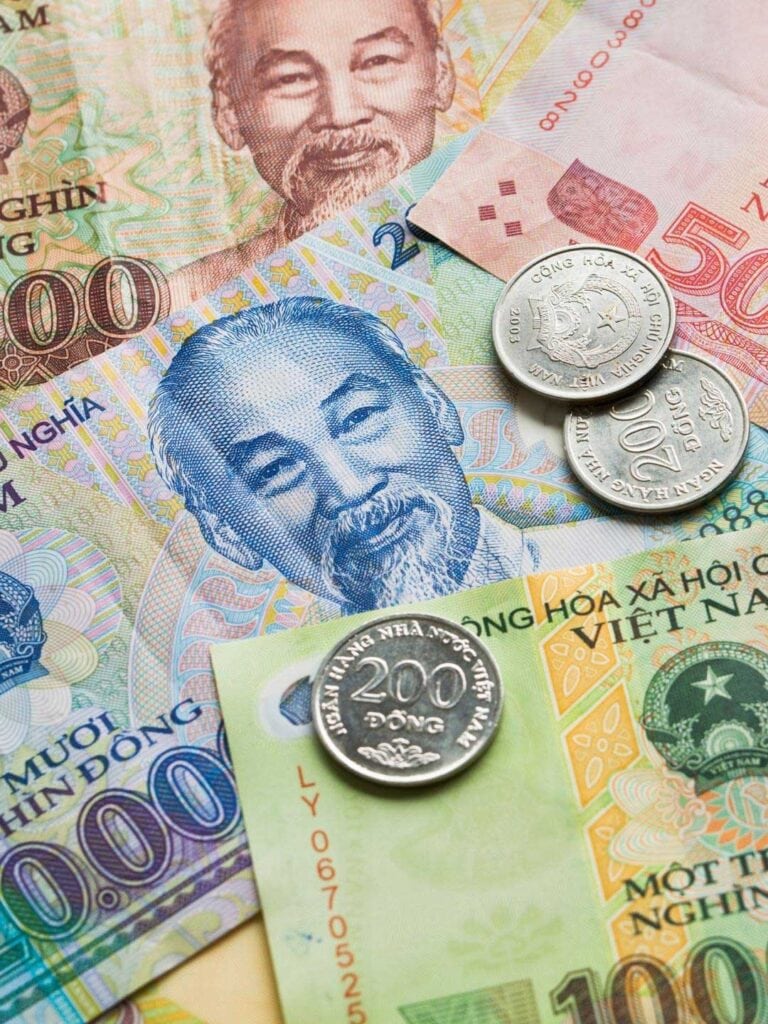
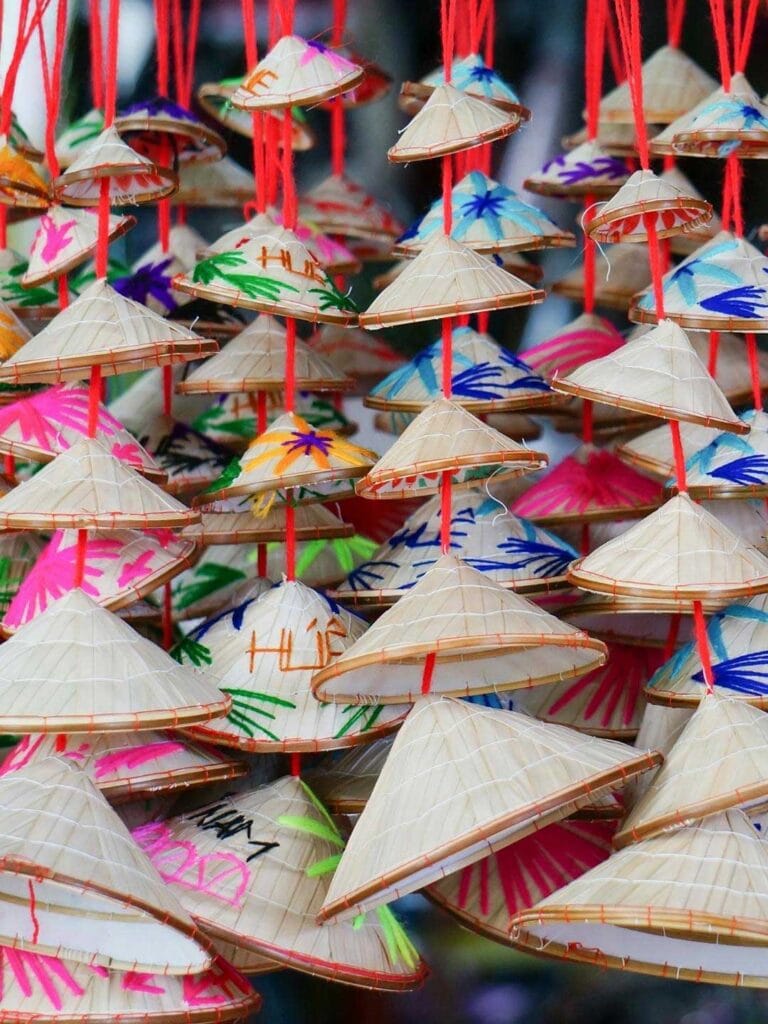
Planning a Trip to Vietnam
When is The Best Time to Visit Vietnam
As Vietnam is a very long country, one of the things to know before traveling to Vietnam is that the weather can be different depending on what region you’re visiting. The dry season runs from December to May and the wet season is from June to November.
The summer months are May to August and during this time the temperatures can rise above 30 degrees and be very humid.
In North Vietnam, the temperatures can get as low as 0 degrees in January, so if planning to visit the mountain region of Sapa, definitely rug up!
I travelled to Vietnam in May/June and found the weather warm throughout the whole country. Although, in Hanoi and Halong Bay there were a few overcast & rainy days.
Then in the central part of the country, particularly Hoi An, the temperatures were always well above 30 degrees. This made being outside around mid-day almost unbearable but the evenings were perfect.
Also, it’s important to realise if planning to visit Hoi An that from October – Mid December the chance of serve flooding is likely, flooding isn’t every year but still very regular. The streets of Old Town become rivers and in past years the flood waters have risen to 5 metres.
Then in the south I only experienced a bit of rain but mostly sunny days that weren’t too hot or humid.
Budget for 1 Month in Vietnam
Vietnam is a very cheap country to travel to. You can book awesome hotels for $20 or less per night, freshly made Banh Mi range from 25,000 – 65,000 Dong, the average price for a local beer is 20,000 Dong and for a hot local meal, you can pay around 50,000 Dong.
For 1 month in Vietnam, in total my husband and I spent $2,982.20 AUD. We stay in mid-range hotels and also spent $250 on tailor-made clothes and shoes. So we definitely could have done this trip even cheaper.
In the coming weeks, I’ll be posting more detailed guides & itineraries on multiple destinations in Vietnam. So if you wanted even more info on the things to know before traveling to Vietnam, please click here to sign up for my mailing list!
International Airports in Vietnam
There are 23 commercial airports in Vietnam and currently, 5 of them operate International flights; Tan Son Nhat in Ho Chi Minh City, Noi Bai in Hanoi, Danang in Danang city, Cam Ranh in Nha Trang and Phu Quoc on Phu Quoc Island.
The three most popular airports for International arrivals are Hi Chi Minh, Hanoi & Da Nang. This makes it easy for tourists to arrive in the North, Central or Southern regions of Vietnam.
Tourist Transport in Vietnam
Even though Vietnam is so long, getting around the country by land is still relatively easy, as long as you’re up for some long trips.
The most popular transport option for tourists (particularly backpackers) in Vietnam is sleeper buses. These buses operate all day & night, have routes all over the country and are usually the cheapest option.
Be aware though these buses can be hit and miss, you’re not always guaranteed to get the same type of bus. Some of them are very clean, and spacious, offer privacy curtains and even your own TV. But then there are others that feel super cramped and dirty.
The longest journey I took on an overnight sleeper bus from Ninh Binh to Hue, which took 11.5 hours. It was awful! The bus was disgusting and it was pretty much full by the time we got on. So we had to sit right up the back which is a row of three beds. I was sleeping way too close to a stranger and something I hope to never do again. Avoid the back row at all costs.
This trip only cost us 480,000 dong / $30 AUD each and was the cheapest transport option available at the time.
Other modes of transport for tourists in Vietnam are trains, private cars and domestic flights.
Visit Rome2rio to plan your transport between cities in Vietnam.
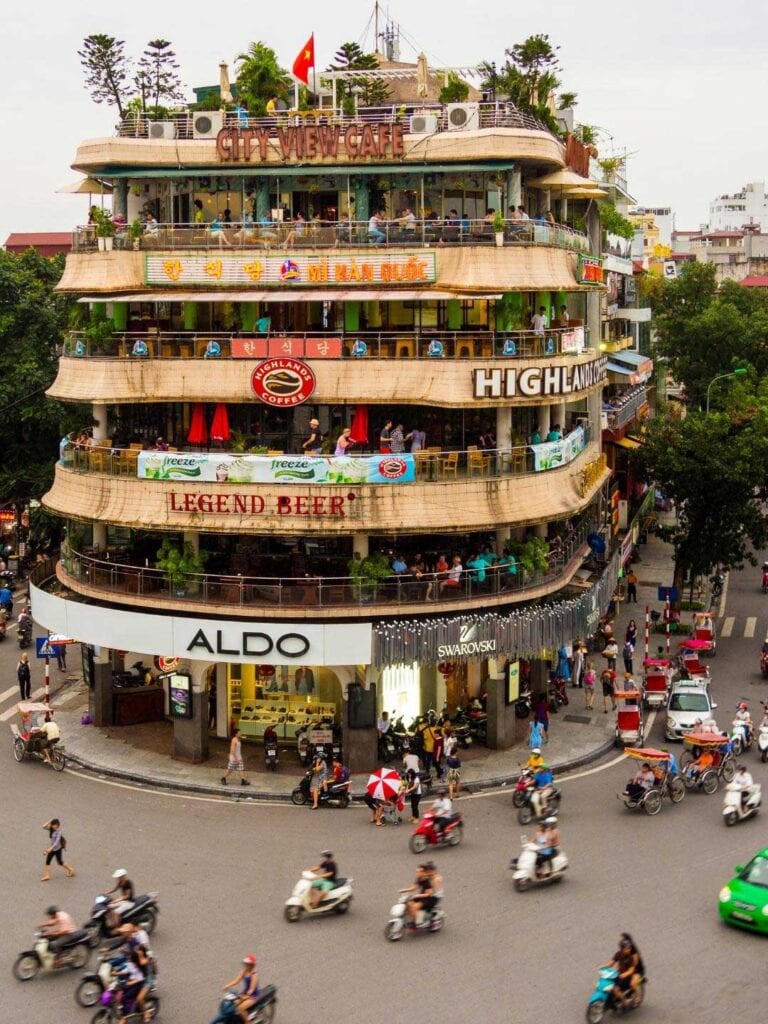

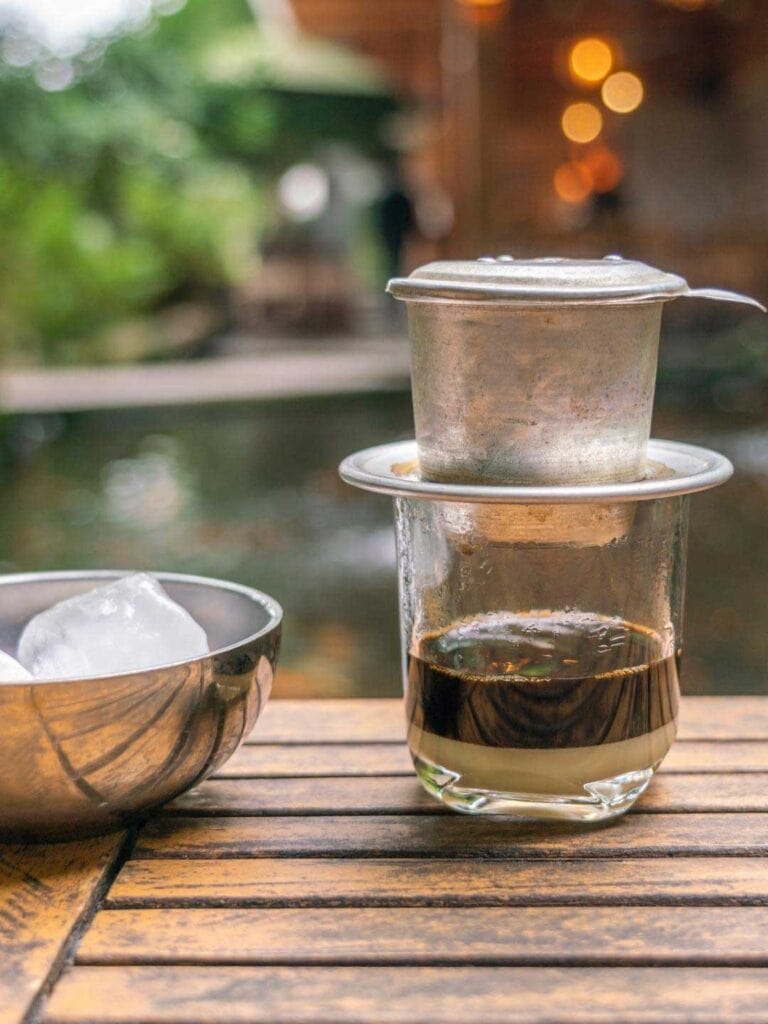
Traditional Vietnamese Food
Due to Vietnam’s history, there is a distinct difference between north, central and southern Vietnam. It’s not just the climate that makes these regions so different, it is also the culture and very noticeably the food.
Throughout history, these three regions have had cultural differences and were the traditional homelands of different ethnic groups. Then in 1954 Vietnam was officially separated into north and south.
Today the country happily lives as one and something I loved the most about travelling through Vietnam was all the unique local dishes we tried along the way. The meals in the North are primarily noodle based and have a Chinese influence, whereas in the south rice is a staple of their diet. And, in central Vietnam, they are famous for having the absolute best Binh Mi, and especially in Hoi An, there is so much variety in the different ingredients used.
What food to try is definitely one of the essential things to know before traveling to Vietnam. So below I’ll list some of the best Vietnamese dishes, separated into regions. And, it’s a list with a mix of meat & vegan meals.
North Vietnam Food
The iconic Pho (pronounced like Fuh) is the perfect place to start, especially in Hanoi. A steaming bowl of Pho only costs around 30K. Even in the hot weather I still craved Pho and found that the small local restaurants served up the tastiest bowls.
Bun Cha is traditionally a very meaty dish, it’s a bowl of grilled pork in noodles, along with a plate of vermicelli noodles, spring rolls, sauce & fresh herbs. You’re supposed to use chopsticks to pick up some vermicelli, dunk it in the sauce & then pick up some of the pork & herbs. A serving of Bun Cha will cost you 100k.
As I don’t eat meat I ordered the vegan version, which was ok but nothing too exciting. It was the vermicelli, herbs & sauce, plus a plate of fried tofu.
Sticky Rice, particularly from a restaurant in Hanoi called ‘Xoi Yen’ (recommended to us by staff in our hotel), a small bowl of sticky rice will cost 20K and there are a number of different toppings which you can order to go with it.
Then for anyone with a sweet tooth, Kem Trang Tien in Hanoi is a very popular Ice Cream store.
Central Vietnam Food
Banh Mi the delicious Vietnamese rolls are definitely something you need to try while in Hoi An. The rolls themselves are always so fresh, crunchy on the outside and airy on the inside and filled with a delicious salad, herbs, meat or tofu.
In Hoi An Banh Mi’s are available everywhere and not one is the exact same, prices start from 15K and can go up to 70K. The more touristy the restaurant the higher the prices get. My favourite place to get a Banh Mi was from a small cart on the side of the road called Banh Mi Chay (we had found it on trip advisor) and they served amazing vegan Banh Mi for only 15k.
Then one of the most popular restaurants for Banh Mi in Hoi An is ‘Banh Mi Phuong’. Made famous by the late Anthony Bourdain after he filmed part of an episode there.
Rolls here cost 30k, and there’s often a queue for takeaway so we found getting a table and eating in was the best option.
Morning Glory is ideal if you’re craving fresh hearty vegetables. Stir-fried water spinach cooked with garlic, chilli & fish sauce.
Banh Cuon Chay which is wet Vietnamese rice paper rolls. This is a savoury side dish stuffed with a number of different vegetables & herbs.
If travelling to Hue, Bun Bo Hue is a very popular (meaty) noodle soup. This dish isn’t ideal for people with a weak stomach, some of the ingredients include sliced beef shank, oxtail, pork knuckles, and pigs blood.
Hoi An legendary Cao Lau is a noodle dish served with only a small amount of broth and some of the toppings include shrimp, pork, egg or tofu and vegetables & herbs. There are also a number of restaurants in Old Town that serve a Vegan version, so this quickly become one of my favourite dishes in all of Vietnam.
The two best places in Hoi An to get Vegan Cat Lau are Minh Hien for 45K and Cao Lầu Không Gian Xanh for 35K.
Southern Vietnam Food
So a dish I always have at Vietnamese restaurants when I’m at home and then kind of forgot all about while travelling Vietnam (because nobody serves it) is Bun Cha Gio.
It wasn’t until we arrived in Ho Chi Minh, the last city on our Vietnam itinerary, that I saw Bun Cha Gio on the menu.
This is a vermicelli noodle salad topped with fresh herbs and fried spring rolls and comes with a light dressing that you tip over the whole dish.
Naunau is a vegetarian cafe in Ho Chi Minh City and a serving of Bun Cha Gio cost 50K.
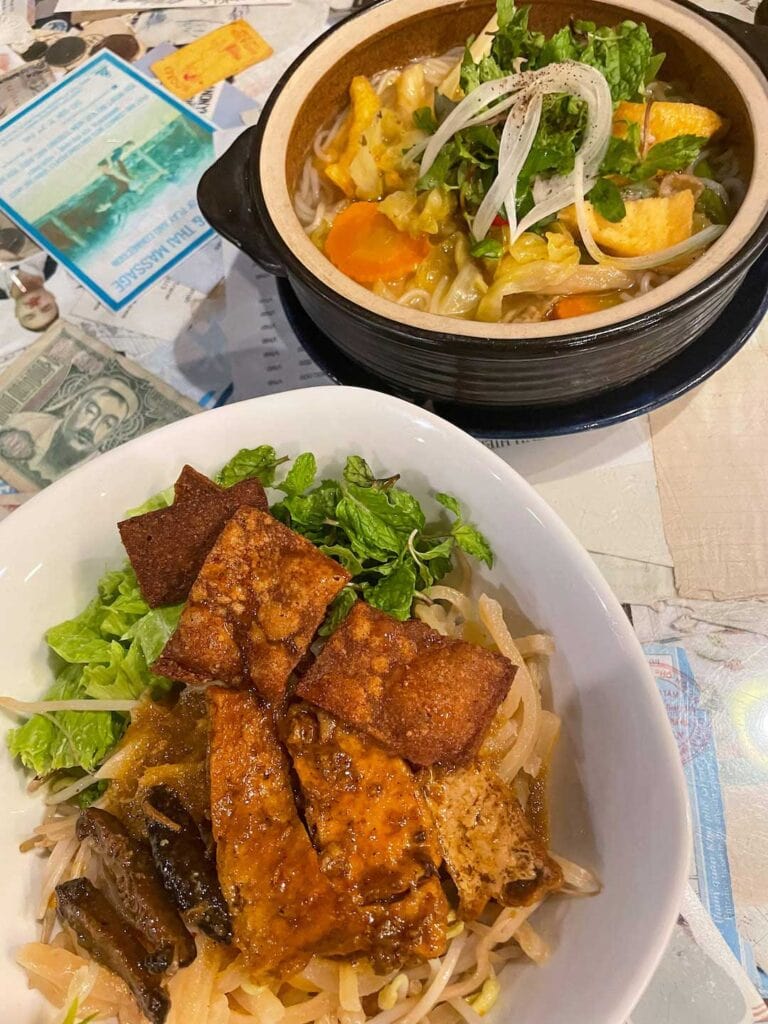
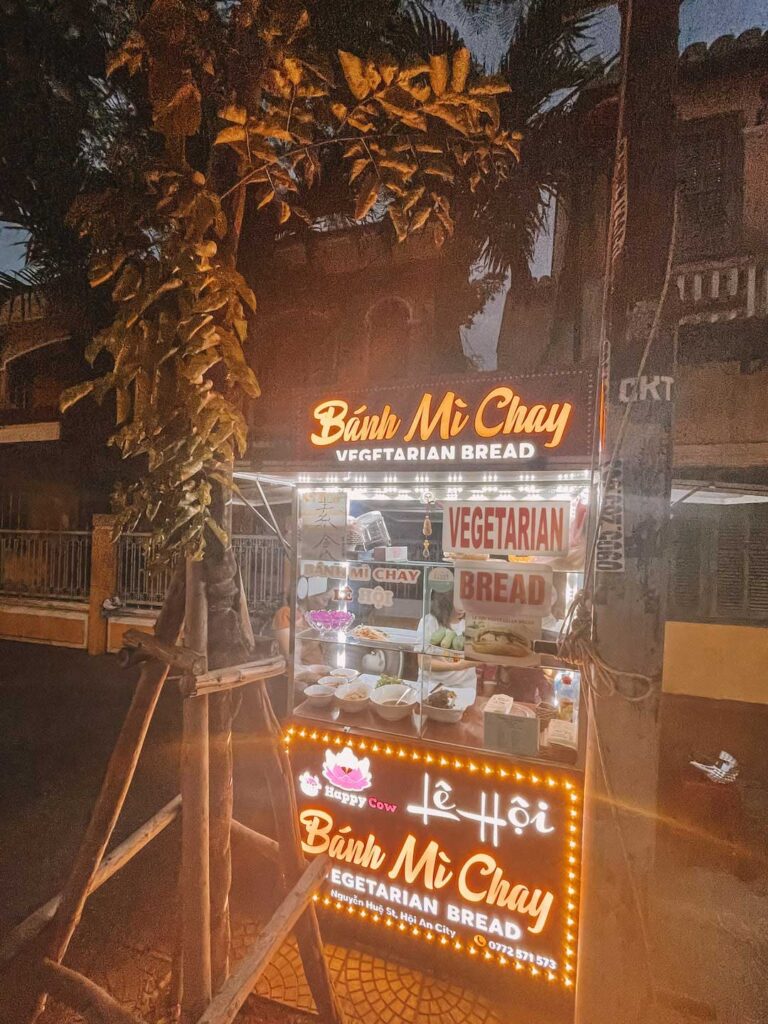
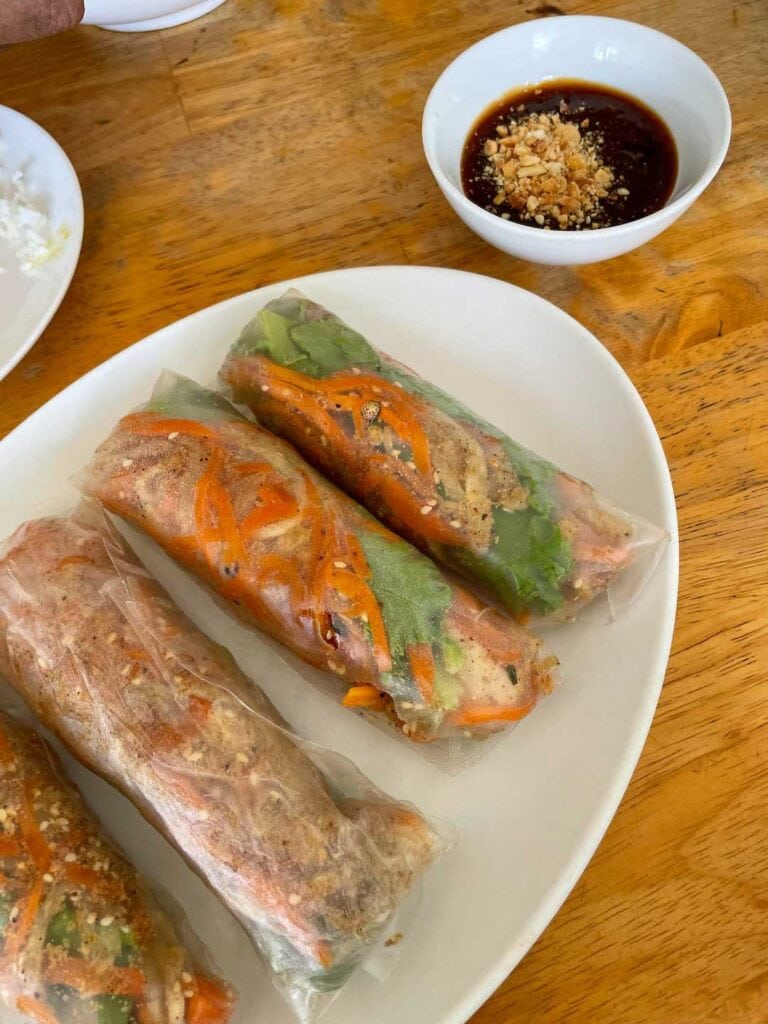
Top 6 Places You Should Have on Your Vietnam Bucket List
Of course one of the most important things to know before traveling to Vietnam is where to go. Out of everywhere, I’ve visited in Vietnam, I have narrowed it down to the top 6 places you should visit.
To get the most out of your time in Vietnam I would recommend exploring destinations in North, Central and Southern Vietnam. Each region offers unique experiences, different scenery and also historical sites.
In the coming weeks, I’ll be posting more detailed guides & itineraries on multiple destinations in Vietnam. So if you wanted even more info on the things to know before traveling to Vietnam, please click here to sign up for my mailing list!
Hanoi
The crazy motobike-filled streets of Qld Quarter are a great way to be thrown into the deep end of Vietnamese city life.
Hanoi is the capital of Vietnam and was the first big city I visited during my trip. It’s so easy to spend all day exploring the streets of the old quarter, where footpaths are nonexistent, restaurant tables & chairs are only knee height and just crossing the road can be an adventure.
It is possible to escape the hectic streets by walking around Hoan Kiem Lake or visiting the Imperial Citadel, which is a UNESCO World Heritage Site.
Highlight: Train Street (although this closed recently and it’s unclear if it’ll open in the future) or secondly Water Puppet Show at Thang Long Theatre.
Minimum Days: four
Halong Bay
Tourist trap, busy, water is full of rubbish! These are a few of the things people had told me about Halong Bay before I visited myself and I’m so glad I didn’t listen.
Halong Bay is absolutely beautiful, this unique scenery, teaming with wildlife is worth every cent.
Yes, this is a very touristy thing to do in Vietnam, only a registered tour company can take you to Halong Bay and most of the boats do stop at the same places. But it’s still so worth going.
Enjoying free time on the boat to watch the limestone cliffs go by, kayaking in caves, hiking to the viewpoint on Titop island & watching Hornbills fly above.
Although there was plenty of other boats around I never felt like everyone was crammed in and thankfully I didn’t see much rubbish in the water.
Highlight: Kayaking in Luon cave
Minimum Days: two
Ninh Binh
Vietnam’s natural beauty at its finest. People say that Ninh Binh is the inland Halong bay and I think you’d be crazy to leave this province out of your Vietnam itinerary.
Ninh Binh offers so many incredible sites, each as jaw-dropping as the next, and is the perfect location for lovers of the outdoors (especially if you’re comfortable riding a scooter).
A few days in Ninh Binh will be perfect to escape the world’s noise and appreciate how beautiful it is. On your own schedule we road around the small towns of Tam Coc & Trang An and visited places like Am Tien Cave, Bich Dong Pagoda, Van Long Nature Reserve and Mua Caves.
Highlight: Van Long Nature Reserve Bamboo Paddle Boat Ride
Minimum Days: two
Hue
This city is an awesome mix of new and old, making it the perfect place for visitors who want a mix of history and fun nightlife.
Hue was the capital of Vietnam from 1802 – 1945 under the Nguyen Dynasty. On one side of the Perfume River is the Imperial City where visitors can explore the palaces, gardens, and homes of the Nguyễn dynasty within the walled fortress. And, then on the other side is a vibrant city filled with modern cafes, bars and local markets.
Also, 12km from the city is a quiet coastline and an abundance of seafood restaurants.
Highlight: Imperial City of Hue & the Abandoned Water Park.
Minimum Days: three
Hoi An
Rarely overlooked by visitors to central Vietnam, Hoi An is a melting pot of Chinese, French, Japanese & Vietnamese cultures. The ancient town is an extremely well-preserved part of history and was once a trading port that dates back to the 15th century.
Today Hoi An is a colourful town filled with awesome restaurants, bars & shops beautifully decorated with traditional brightly colors lanterns.
When the intense heat of the day cooled down the streets of Hoi An completely filled up with tourists or locals trying to sell us all something. It was so stunning to see the town all brightly lit up at night but at times the cramped streets did get a bit intolerable.
Thankfully close to the city, there’s also An Bang Beach and Cam Thanh Coconut Village, which are both good escapes from the busy streets of Old Town and offered the opportunity to spend time in nature.
Highlight: The Ancient Town of Hoi An.
Minimum Days: four
Ho Chi Minh
Although Ho Chi Minh is one of the most densely populated cities in Vietnam, it doesn’t feel too overpowering. This is because the city is divided into 24 districts so by exploring one district at a time it never felt too overwhelming.
District 1 is the perfect place for first-time visitors, this area puts you in the centre and close to Bui Vien walking street, Saigon Central Post Office and Ben Thanh Market.
The best way to get around the city is by local bus or the popular ride-share app Grab.
Highlight: by night, Bui Vien Street and by day, War Remnants Museum (and remember here it’s called the American War).
Minimum Days: three
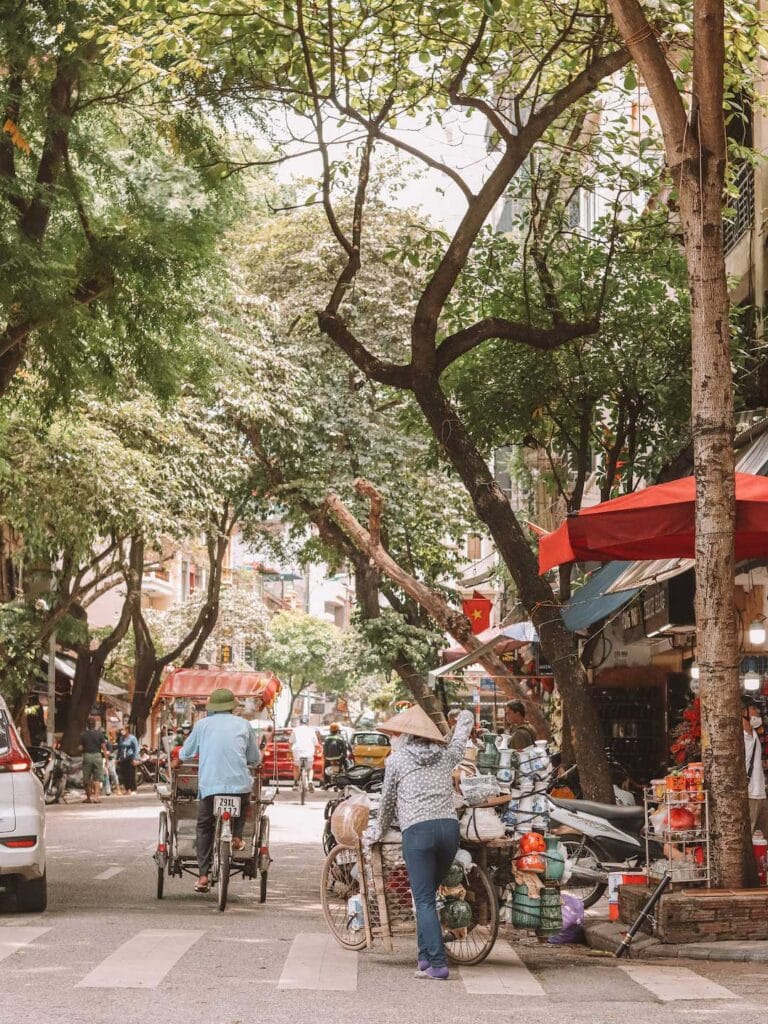

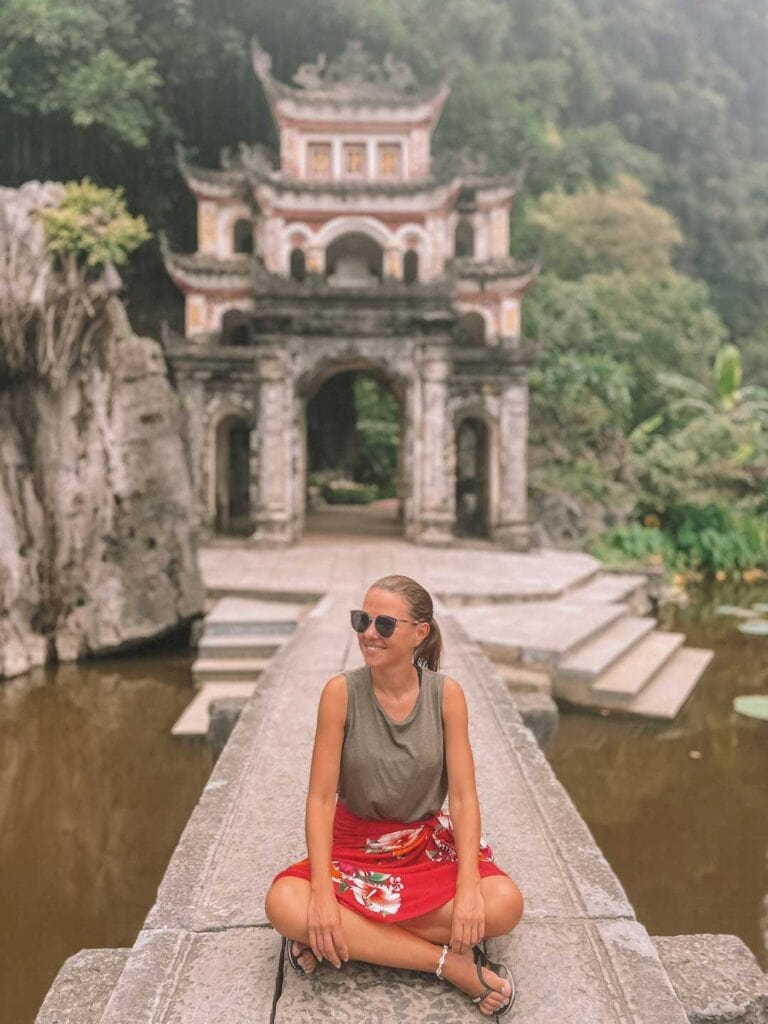
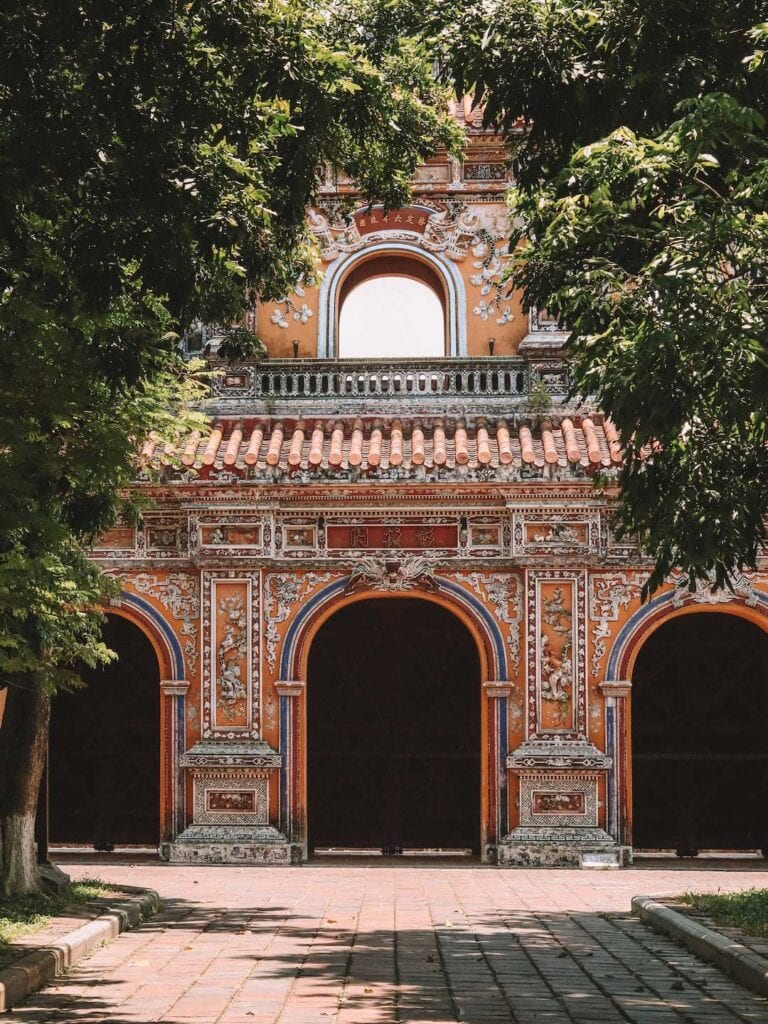
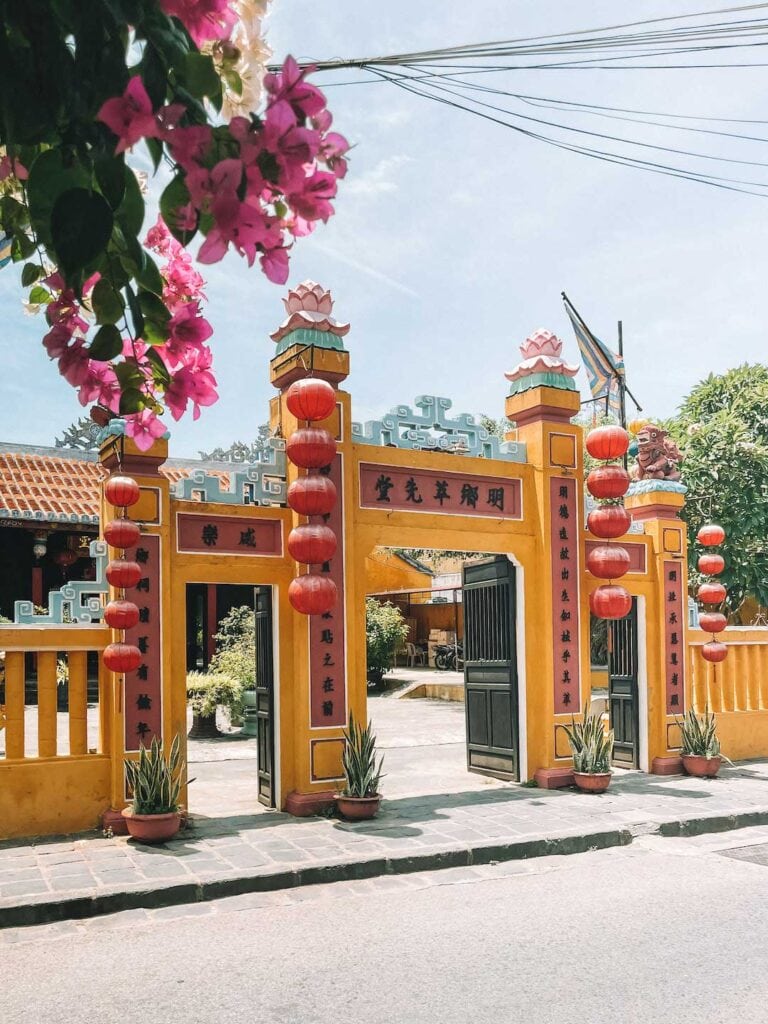
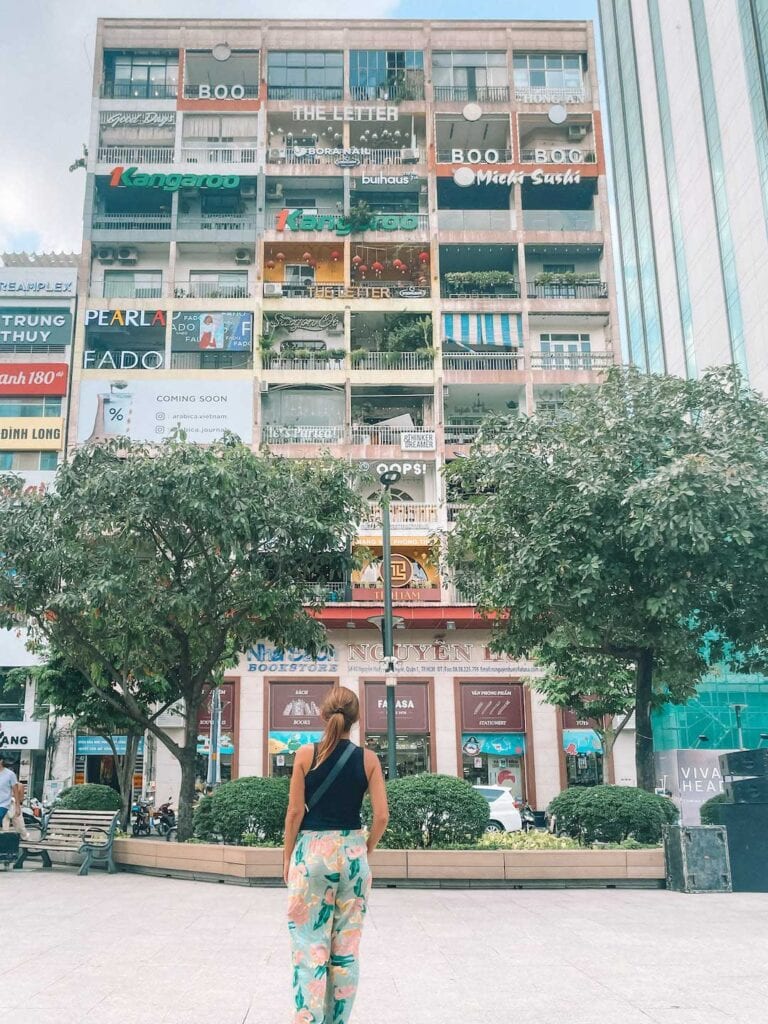
Common Questions About Traveling in Vietnam
I’ve answered a lot of questions & covered important things to know before traveling to Vietnam throughout this post, such as visas, food, the best time to visit & local currency. But I just wanted to add a few more below and if you have further questions feel free to add a comment underneath.
How do you cross the street in Vietnam?
If you’ve seen footage of the crazy streets in Vietnam filled to the brim with cars & motorbikes, people often wonder how do you cross the road?
The first thing you need to realise is that no one is going to stop and let you pass, waiting for that would leave you standing there all day. But cars and especially bikes will just weave around you as you cross.
To help the drivers out, don’t make any sudden moments or get the urge to run across and always keep moving forward, don’t step backwards.
Keep these in mind and you’ll be crossing the road like a local within one day of arriving.
Can you be Vegan in Vietnam?
Yes, but be mindful that many locals don’t recognize the difference between veganism and vegetarianism, so always ensure the dish won’t contain any eggs or dairy.
Also keep in mind these two Vietnamese phrases Thuan Chay (vegan) and An Chay (vegetarian), a lot of people don’t speak English in Vietnam so also have google translate on your phone to ensure they understand what you’re asking. And, after a while, you’ll start to notice ‘Chay’ written on a lot of signs, indicating they have Vegetarian food.
I had read that Vietnam has some of the best coffee in the world but I didn’t find many places that stocked plant-based milk. So hopefully you enjoy black coffee.
To make things easier there are also a lot of Vegan restaurants in Vietnam these days, especially in bigger cities. But unfortunately, these are a lot more expensive than eating local.
Should I learn some Vietnamese?
Unlike other Southeast Asian countries like Thailand or Indonesia, a lot of Vietnamese don’t speak any English. This can definitely make some situations difficult when traveling so learning some Vietnamese will be very helpful. And, I’m sure will put a smile on the local’s faces when they see the effort foreigners are putting in.
What’s a realistic budget for Vietnam?
Before arriving in Vietnam my daily budget goal was $80 AUD for two people! And, unfortunately, that didn’t happen, for the two of us, we spent an average of $102AUD per day. But if we didn’t spend so much on tailor-made clothes & shoes in Hoi An, or moved around so often (transport costs really add up) we definitely could have gotten our budget below $80 per day. And still have stayed at 3-star private accommodation.
A few tips to keep your expenses low in Vietnam are; to eat at local restaurants, drink local beer, and use a booking site that will give you points or cash back on your accommodation. Also, travel slowly, and when travelling between cities, take the bus, it’s not always glamorous but the cheapest option.
Check out this guide on Rakuten to get cash back on your accommodation.
Can I drink tap water in Vietnam?
No, always drive bottled water. The best option for your budget & the environment is to bring your own reusable drink bottle and for 25K Dong purchase a 6L bottle of water and each day top up your drink bottle.
Is Vietnam easy to travel?
Yes, Vietnam is an awesome country to travel to and even for young people with limited travel experience. It’s safe, the locals are friendly and in my experience, if they couldn’t speak English they would often find me someone who could. Plus there are endless accommodation and transport options available so booking last minute isn’t an issue.
How long do you need to travel Vietnam?
A minimum of two weeks but four weeks is heaps better especially if you want to see parts of each region.
In Conclusion
Vietnam is a country that will delight the senses, offering endless natural beauty, kind locals, fresh & delicious food and unforgettable travel experiences.
In this post, I have included all the essential things to know before traveling to Vietnam including a budget, and places you must have on your Vietnam bucket list. And then answered the most common questions travelers have!
In the coming weeks, I’ll be posting more detailed guides & itineraries on multiple destinations in Vietnam. So if you wanted even more info on the things to know before traveling to Vietnam, please click here to sign up for my mailing list!
Thanks for reading,
Happy Travels.
More on Vietnam
Things to Know Before Traveling to Vietnam.
Pin It!
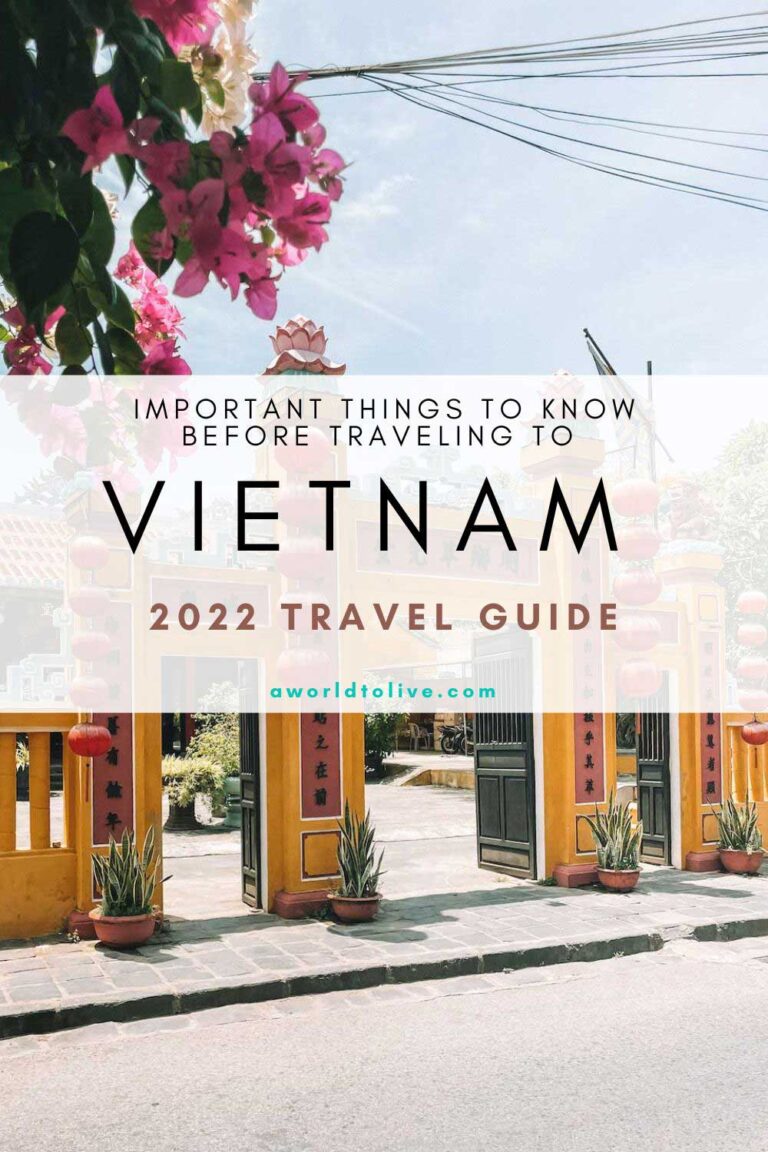
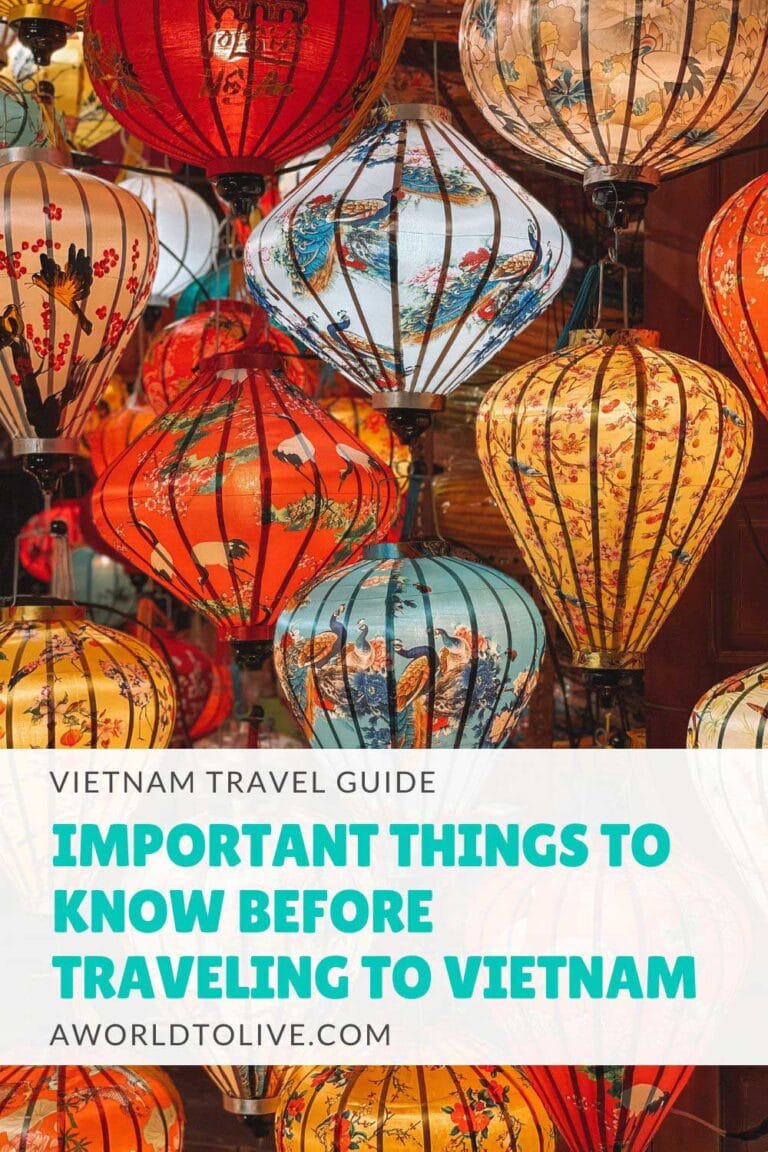
If you liked this article, I would love for you to share it with your friends.
Planning a Trip? Travel Resources Below;
Where to Next?
If you’re unsure of where to visit next, why not check out my Destination Page filled with exciting ideas from all over the world!
Searching For The Best Flights
Without a doubt the best site for comparing and booking flights is Skyscanner. Just click here to compare flights and get the best prices with Skyscanner.
Booking Accommodation
Then when it comes to booking accommodation; if you’re after a hostel the best place to search is HostelWorld.
Or, if you’d prefer a hotel or resort, Booking.com or Agoda are two of the best sites out there, they consistently return cheap rates.
Get Your Cashback
Before you book though don’t forget to activate your Rakuten browser extension so you get cashback on these bookings.
Don’t know what Rakuten is? Read my guide here!
And, Don’t Forget Travel Insurance
Unfortunately, everything doesn’t always go to plan but travel insurance will protect you when it comes to illness, injury, theft & cancellation. I never travel overseas without travel insurance, it’s just not worth the risk!
Cover-More is a trusted company and they also have COVID-19 benefits available.

Elyse is the author & content creator behind A World To Live. After traveling to over 40 countries, she has a passion for discovering new places. Elyse is a money-conscious traveller who loves writing independent travel guides to help her readers get the most out of their travels.
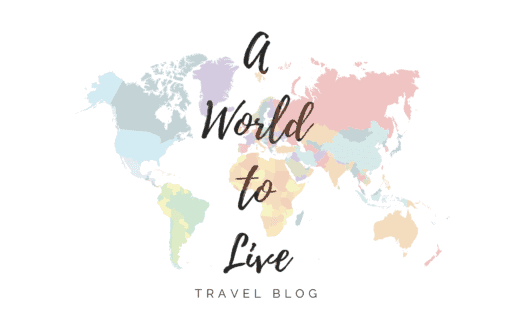
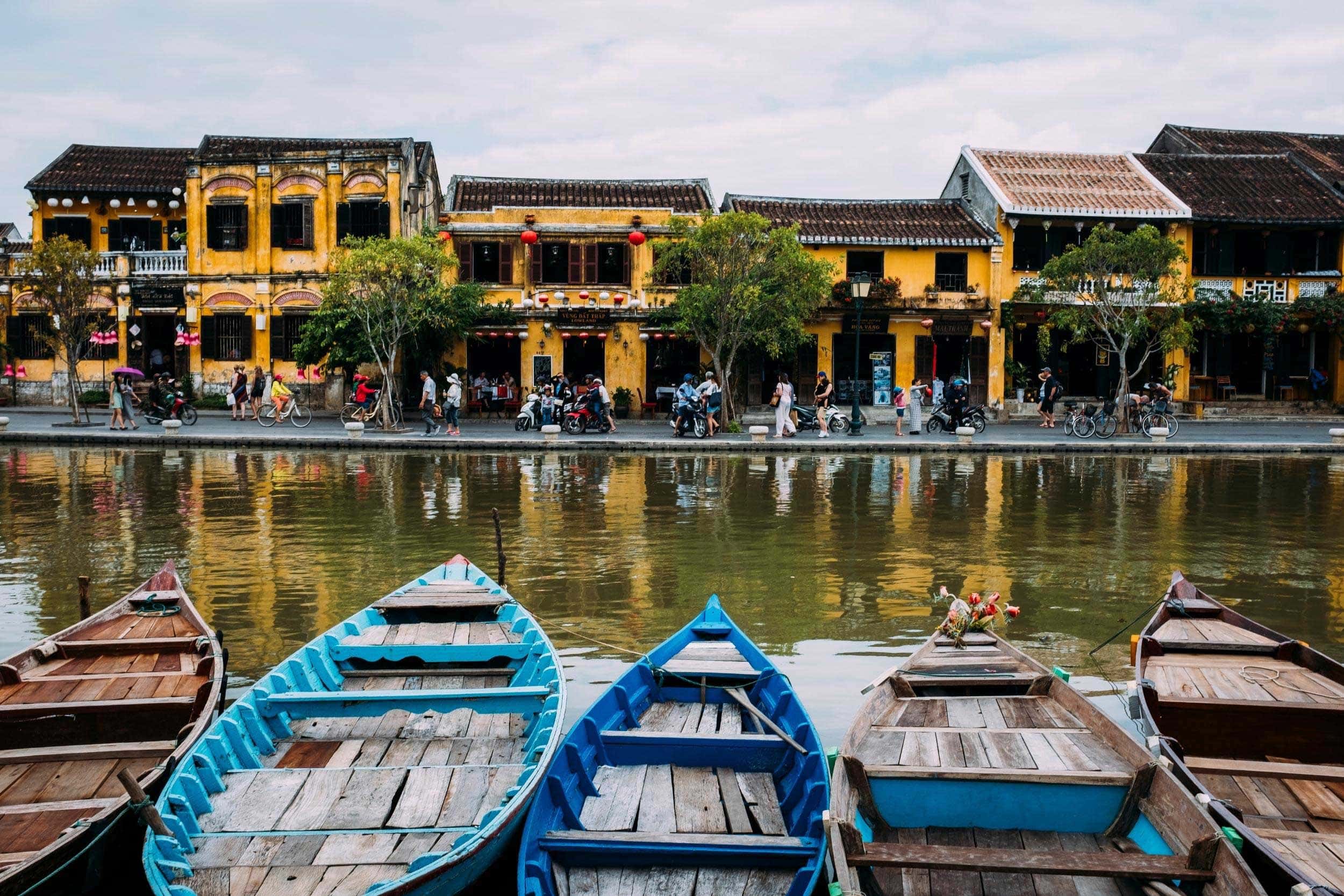

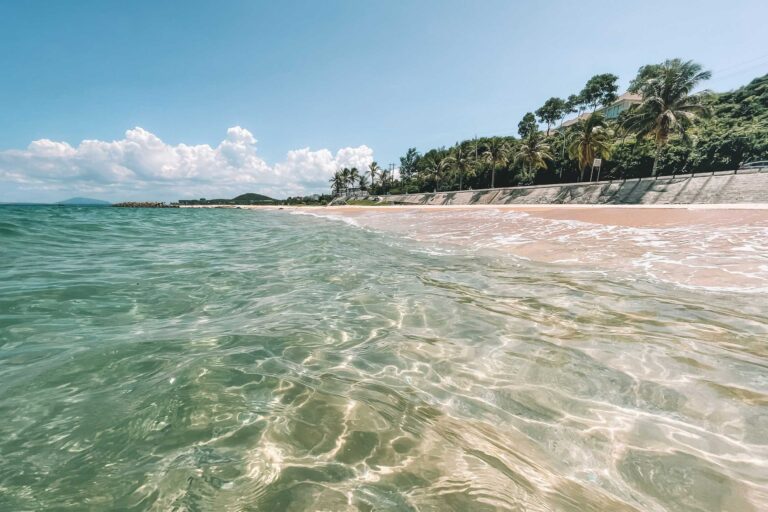
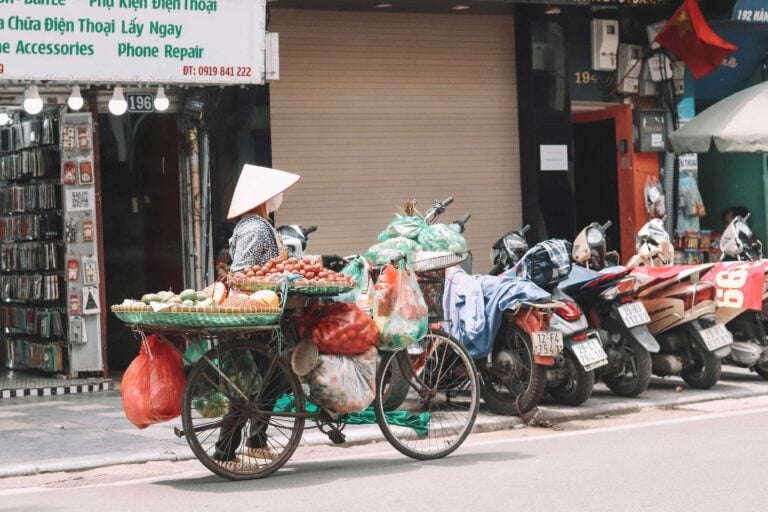
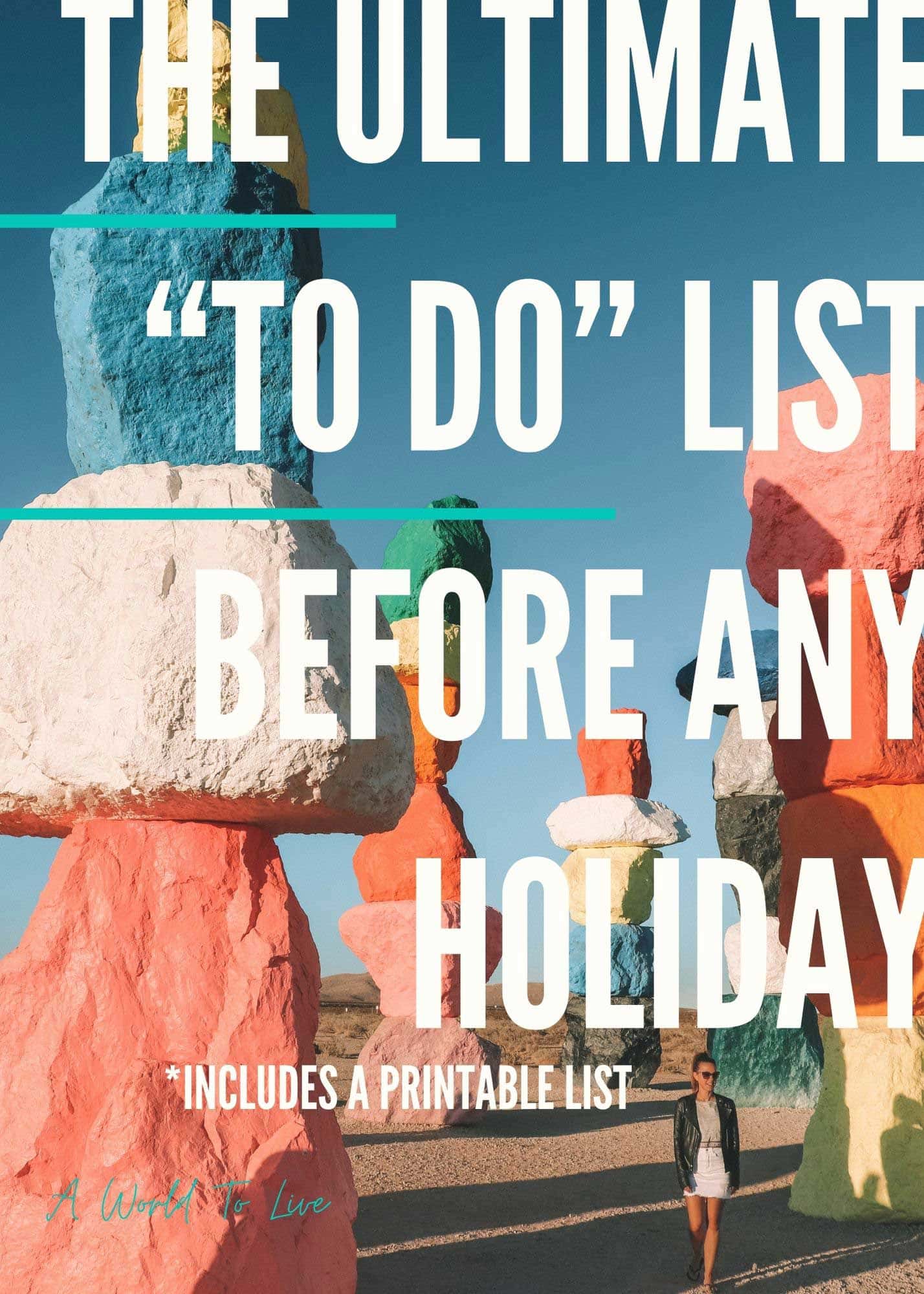
What a great post! I wish I had read this before planning my last trip to Vietnam, but there’s always next time 😉. The best piece of advice we learned before our visit was about crossing the roads – so glad to see that you included that here as well! We also had some trouble with ATMs in both Vietnam and Thailand, so really appreciate your advice here for future reference. Thanks a bunch! Xx Sara
Thanks so much for your kind feedback Sara. Yeah crossing the road is definitely an adventure haha
Love posts like this that include advice on currency, food, and safety tips..thanks for the inspiration.
You’re welcome Jennifer
Very Informative and useful writeup. I love how you explained practical things like budget, street crossing, currency etc.
Thank you so much for your feedback Ankita
Vietnam is on my bucket list. Thanks for all the great information – it will help my trip to Vietnam.
You’re so welcome. I’m sure you’ll love it there Sharyn
Fantastic post. You cover a lot of very useful information. I loved how you covered the cuisine options. I hope to visit Vietnam one day.
We have not yet visited Vietnam. But it is on our travel wish list. So great to know some important things before we plan our trip. It was interesting to read that hotels wanted cash. And to learn that the weather varied so much from north to south. Good to know that we really should plan 2 to 4 weeks for a good visit. One day we will get Vietnam on the planning board.
Thanks so much Linda, so glad you found this post helpful.
This post is so comprehensive! I’m going to tell everyone to read this when they tell me they’re going to Vietnam! Thank you for writing it. It’s very helpful.
aww thank you so much, appreciate that
Thank you for your detailed guide. I’ve been just to Halong Bay and Hoi An but would love to slow travel there.
You’re welcome, they are such beautiful areas but there is definitely heaps to see in Vietnam
So many great tips. Unless you are learning from someone who has already experienced Vietnam, there are many things you wouldn’t know.
This is a lot of useful information for Vietnam! Thank you. Great post
Wow, this is such a helpful, detailed guide! It’s especially helpful to know about the dry season and wet season. I’m sure planning around the weather can really impact your trip to Vietnam. Thank you for sharing!